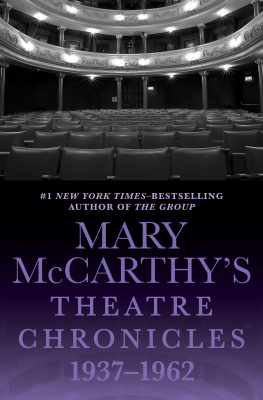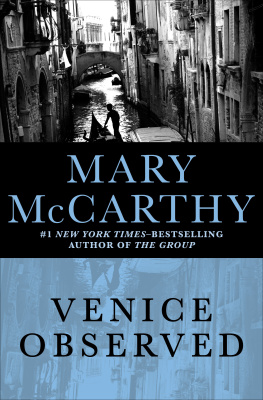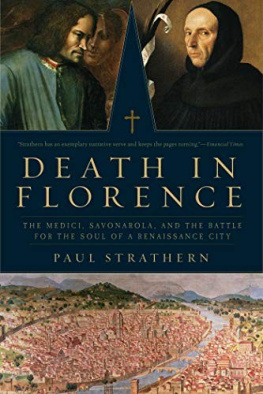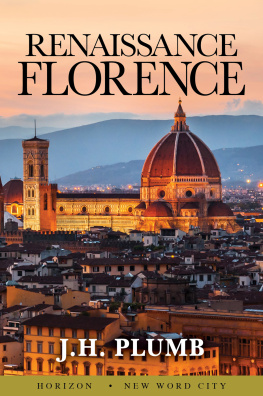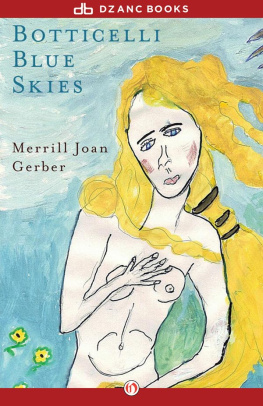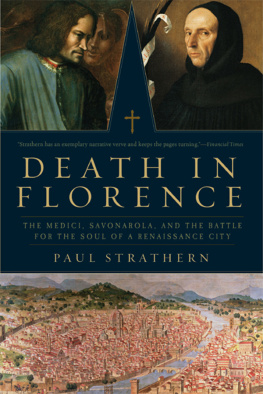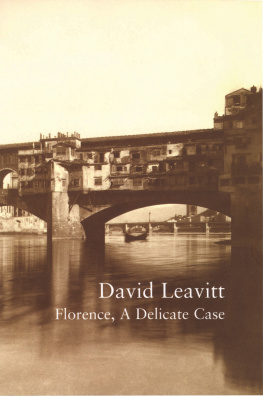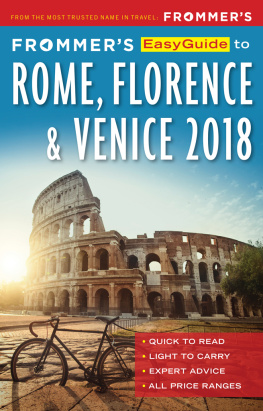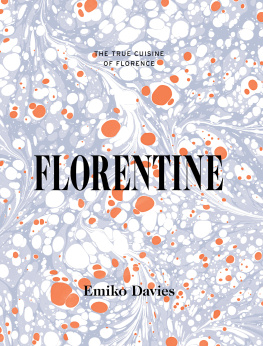
THE STONES OF FLORENCE AND VENICE OBSERVED
MARY M c CARTHY (19121989) was a novelist, essayist and critic. Her political and social commentary, literary essays and drama criticism appeared in magazines such as Partisan Review, The New Yorker, Harpers and The New York Review of Books, and were collected in On the Contrary (1961), Mary McCarthys Theatre Chronicles 19371962 (1963), The Writing on the Wall (1970), Ideas and the Novel (1980), and Occasional Prose (1985). Her novels include The Company She Keeps (1942), The Oasis (1949), The Groves of Academe (1952), A Charmed Life (1955), The Group (1963), Birds of America (1971) and Cannibals and Missionaries (1971). She was the author of three works of autobiography, Memories of a Catholic Girlhood (1957), How I Grew (1987), and the unfinished Intellectual Memoirs (1992), and two travel books about Italy, Venice Observed (1956) and The Stones of Florence (1959). Her essays on the Vietnam War were collected in The Seventeenth Degree (1974); her essays on Watergate were collected in The Mask of State (1974).
MARY McCARTHY
The Stones of Florence and Venice Observed
PENGUIN BOOKS
PENGUIN BOOKS
Published by the Penguin Group
Penguin Books Ltd, 80 Strand, London WC2R 0RL , England
Penguin Group (USA) Inc., 375 Hudson Street, New York, New York 10014, USA
Penguin Group (Canada), 90 Eglinton Avenue East, Suite 700, Toronto, Ontario, Canada M4P 2Y3 (a division of Pearson Penguin Canada Inc.)
Penguin Ireland, 25 St Stephens Green, Dublin 2, Ireland (a division of Penguin Books Ltd)
Penguin Group (Australia), 250 Camberwell Road, Camberwell, Victoria 3124, Australia (a division of Pearson Australia Group Pty Ltd)
Penguin Books India Pvt Ltd, 11 Community Centre, Panchsheel Park, New Delhi 110 017, India
Penguin Group (NZ), cnr Airborne and Rosedale Roads, Albany, Auckland 1310, New Zealand (a division of Pearson New Zealand Ltd)
Penguin Books (South Africa) (Pty) Ltd, 24 Sturdee Avenue, Rosebank, Johannesburg 2196, South Africa
Penguin Books Ltd, Registered Offices: 80 Strand, London WC2R 0RL , England
www.penguin.com
The Stones of Florence first published by William Heinemann Ltd 1959
Venice Observed first published by William Heinemann Ltd 1961
Published in one volume in Penguin Books 1972
Published in Penguin Classics 2006
Copyright Sedo S. A. Lausanne, 1956
All rights reserved
The moral right of the author has been asserted
Except in the United States of America, this book is sold subject to the condition that it shall not, by way of trade or otherwise, be lent, re-sold, hired out, or otherwise circulated without the publishers prior consent in any form of binding or cover other than that in which it is published and without a similar condition including this condition being imposed on the subsequent purchaser
ISBN: 978-0-14-191344-5
To Roberto Papi
Authors Note
Florentines assure me that the Florentines are stingy and inhospitable; in the text I have taken their word for it and cited examples they have given. If they are right, then all the Florentines, born and naturalized, whom I came to know well are exceptions. The list of these exceptions and an account of my indebtedness would make a short chapter in itself, and I name only those who were of direct help in the work of this book. First of all, Roberto Papi and his wife, Vittorina; their quick kindness and perceptive generosity would stand out even in Heaven, among the angels. Also my affection and thanks go to Aldo Bruzzichelli, Miss Nicky Mariano, Dr Hanne Khiel, Signora Titina Sartori, Countess Christina Rucellai, Professor Ulrich Middeldorf, Bernard Berenson, the Reverend Mr Victor Stanley, and Sabatina Geppi.
My thanks finally go to the city of Florence and to all the Florentines, past and present. I agree with that pope who called them the fifth element.
The reader, I hope, will overlook a few inaccuracies in the description of present-day Florence. The incessant changes of modern Florence keep it always ahead of the author.
MARY MCCARTHY
The Stones of Florence
Chapter 1
How can you stand it? This is the first thing the transient visitor to Florence, in summer, wants to know, and the last thing too the eschatological question he leaves echoing in the air as he speeds on to Venice. He means the noise, the traffic, and the heat, and something else besides, something he hesitates to mention, in view of former raptures: the fact that Florence seems to him dull, drab, provincial. Those who know Florence a little often compare it to Boston. It is full of banks, loan agencies, and insurance companies, of shops selling place mats and doilies and tooled-leather desk sets. The Raphaels and Botticellis in the museums have been copied a thousand times; the architecture and sculpture are associated with the schoolroom. For the contemporary taste, there is too much Renaissance in Florence: too much David (copies of Michelangelos gigantic white nude stand on the Piazza della Signoria and the Piazzale Michelangelo; the original is in the Academy), too much rusticated stone, too much glazed terracotta, too many Madonnas with Bambinos. In the lacklustre cafs of the dreary main piazza (which has a parking lot in the middle), stout women in sensible clothing sit drinking tea, and old gentlemen with canes are reading newspapers. Sensible, stout, countrified flowers like zinnias and dahlias are being sold in the Mercato Nuovo, along with straw carryalls, pocketbooks, and marketing baskets. Along the Arno, near Ponte Vecchio, ugly new buildings show where the German bombs fell.
Naples is a taste the contemporary traveller can understand, even if he does not share it. Venice he can understand Rome Siena. But Florence? Nobody comes here any more, says the old Berenson, wryly, in his villa at Settignano, and the echoing sculpture gallery of the Bargello bears him out; almost nobody comes here. The big vaulted main hall seems full of marble wraiths: San Giorgio, San Giovanni, San Giovannino, the dead gods and guardians of the city. The uniformed modern guards standing sentinel over the creations of Donatello, Desiderio, Michelozzo, Luca della Robbia, Agostino di Duccio have grown garrulous from solitude, like people confined in prison: they fall on the rare visitor (usually an art historian) and will scarcely let him go. The Uffizi, on the contrary, is invaded by barbarian hordes from the North, squadrons of tourists in shorts, wearing sandals or hiking shoes, carrying metal canteens and cameras, smelling of sweat and sun-tan oil, who have been hustled in here by their guides to contemplate Venus on the Half-Shell.
Il Diluvio Universale, observes a Florentine, sadly, punning on the title of Paolo Uccellos fresco (now in the Belvedere). There is no contradiction. Nobody comes here any more is simply the other side, the corollary, of the phenomenon of mass tourism the universal deluge. The masses rush in where the selective tourist has fled. Almost nobody comes to see Donatellos David in the Bargento, the first nude statue of the Renaissance, or San Giorgio or San Giovannino, Donatellos also, or the cantorias of dancing children in the Museum of the Works of the Duomo, but Michelangelo and Cellini, partly, no doubt, because of vaguely sensed off-colour associations, draw crowds of curiosity-seekers. Florence is scraping the bottom of the tourist barrel. And the stolid presence of these masses with their polyglot guides in the Uffizi, in the Pitti, around the Baptistery doors and the Medici Tombs, in the cell of Savonarola and the courtyard of Palazzo Vecchio is another of the disagreeables, as the Victorians used to call them, that have made Florence intolerable and, more than that, inexplicable to the kind of person for whom it was formerly a passion. How can you stand it?
Next page


